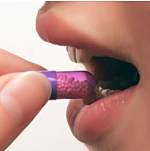Health care is complex, expensive and often depersonalizing. It shouldn’t be. At the University of Maryland Center for Integrative Medicine, the staff focuses on evaluating and involving complementary medicine into traditional western or “scientific” medicine. Founded in 1991 by Brian Berman, M.D., a family medicine trained physician, he had learned the certain alternative approaches could complement the usual diagnostic and therapeutic methods that he had been taught in his medical school education and training. He found that his patients’ experiences were enriched by treating the whole person rather than depending on a technology-focused practice. A grateful and forward looking patient offered him a grant to begin the Center with the proviso that it embrace and study evidence-based science along with education and collaborative patient care to create a comprehensive humanistic approach to patient care.
Since its founding 20 years ago the Center has been awarded over $30 million in NIH grants and has been named as a center of excellence for research. From this work have come over 340 high quality peer-reviewed scientific articles published in the best medical journals. These have been in areas such as acupuncture, herbal remedies and mind-body therapies focusing on arthritis, pain depression, cancer, trauma and inflammation. The center employs a staff for clinical care that includes family medicine and other physician specialists along with licensed acupuncturists, massage therapists, nutritionists and many other disciplines.
As just one research example, acupuncture was studied in a double blind fashion to determine if the addition of acupuncture to best standard treatment improved the lot of those with knee osteoarthritis. Those who got acupuncture, when compared to those that got sham acupuncture, has less pain, used fewer pain medications and had greater range of motion.
At the “Health and Wellness Conference” a few weeks ago to celebrate the 20th anniversary of the founding of Center, Delia Chiaramonte, MD described what an integrative approach to a medical dilemma might look like. She described a medical student who had suffered from severe headaches for many years that were limiting his quality of life and his effectiveness as a student. His physician had identified them as cluster headaches and had tried various standard medications without success. A frustrating situation.
He was then evaluated differently using an integrative approach. It involved a lot of probing about his headaches, his lifestyle including diet and activity, his stresses and his school work. Like almost all medical students, he studied hard. He said he stayed up until about 3:00am, but in part this was because he couldn’t fall asleep any earlier. His diet included a lot of doughnuts and a lot of other high carbohydrate items plus about 12 cups of caffeinated coffee each day. He had no time for exercise. He sat – hunched over – in front of his computer for many hours each day, and his posture showed it.
His headaches fit the description of “cluster” headaches, often with a sense of an ice pick sticking into his right eye – near unbearable pain. The standard medical texts suggest use of ergotamine tartrate for cluster headaches and also note its potential side effects. There is no mention of other modalities or adjustments to lifestyle issues. But cluster headaches can be amplified by stress, worsened by sleep deprivation and the stabbing could well have been posture related.
So instead of recommending medications, his integrative medicine “prescription” included the following: he was to see a nutritionist to devise a more healthy diet. He was to work with a personal trainer to establish an exercise program – one that could be done anywhere without impacting on his studies. He was to visit a chiropractor to release his sternocleidomastoid muscles and other neck muscles back to their normal length. In addition he was to have no caffeine after noon and he was to get to bed by 11:00pm each night.
Given the pain and debility of his headaches, he was more than willing to give this prescription a try. It worked. The headaches disappeared, he felt generally better, he was no longer drowsy in class and he began to truly enjoy medical school. And he was off all medications.
This is the power of integrative medicine. It used a holistic approach and brought to bear many different disciplines including nutritional medicine, exercise physiology, stress management, chiropractic and family medicine. I wrote about this extensively in The Future of Medicine – Megatrends in Healthcare .
Note: You can find the Center for Integrative Medicine on Facebook at http://on.fb.me/HWRPKp





